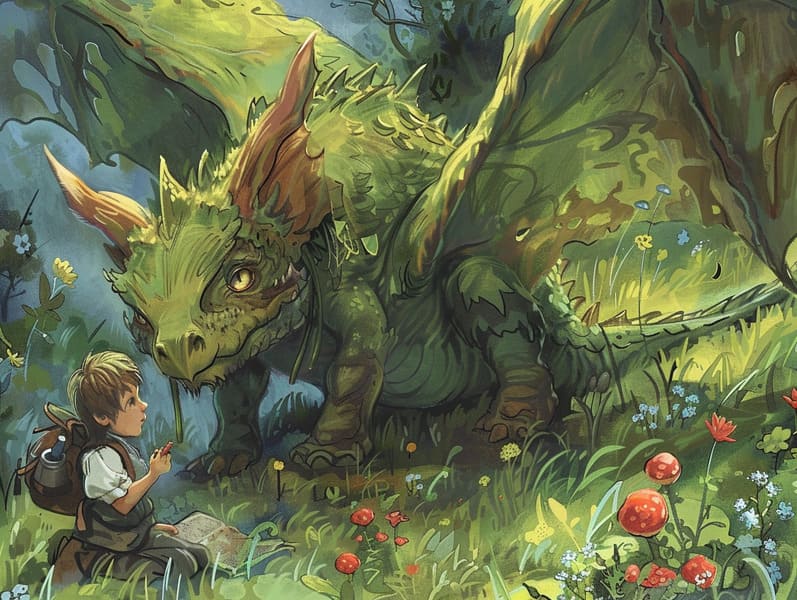The Beginning of Fairy Tales for Kids with Their Steadfast Radiance.

Vintage fairy tales have ancient roots. These narratives have been relayed from one generation to the next well before they were ever put on paper. They emerged from a variety of traditions, including Western traditions. They were initially narrated among older generations, often carrying themes and messages mirroring the societal norms and beliefs of the time.
The renowned Brothers Grimm, Jacob and Wilhelm, were among the first to compile many of these beloved tales. Their compilation, "Grimm's Children's Stories," included tales like "The Story of Cinderella," "The Story of Hansel and Gretel," and "Snow White," which have since become classics in the world of timeless fairy tales. Similarly, H. C. Andersen's whimsical tales, such as "The Mermaid's Tale," and "The Little Duckling," have stolen hearts worldwide, cementing their place in the pantheon of famous fairy tales.
Though they are centuries old, these stories remain as pertinent as ever, especially as children's bedtime stories. These magical stories are now available in many formats, including richly illustrated books, enchanting animations, and free fairy tales online.
Their persistent charm can be ascribed to several fascinating points:
Important Morals: Traditional fairy tales often teach important moral lessons. Tales like "The Story of the Boy Who Cried Wolf" teach the merit of truthfulness, while "The Story of the Tortoise and the Hare" stress the merits of resolve and humility. These stories offer young readers clear distinctions between good and bad, molding their moral compass in a mild yet important way.
Empathy and Awareness: Ancient fairy tales frequently showcase figures facing difficulties and adversities, stimulating listeners to resonate with their struggles and boost their triumphs. For instance, "Beauty and the Beast" points out the importance of seeing beyond the surface to know the inner core of a individual, fostering perception and perception.
Cultural Knowledge: Many timeless fairy tales are saturated in the cultural contexts from which they grew. Understanding these narratives can provide informative snapshots into different historical contexts, enhancing a sense of international awareness and knowledge.
Fantasy and Innovation: The extraordinary elements in ancient fairy tales—wizardry and magic—enliven children’s imaginative ideas. These fairy tales move readers to imaginary realms, firing up creative thinking and a sense of amazement that stays a lifetime.
Ancient fairy tales are not only spellbinding but also informative. They function as whimsical tools in strengthening various thinking and feeling skills in young readers. When classic fairy tales are spoken, they nurture verbal skills by offering new language and detailed sentence structures. This practice also advances hearing abilities and attention span, as children pay close attention, eager to see what happens next.
Furthermore, deliberating the themes and characters of timeless fairy tales can enhance problem-solving abilities and intellectual skills. The young are led to spot patterns, predict happenings, and understand cause and effect. These debates also benefit children articulate their thoughts and feelings, promoting their emotional intelligence.
In today’s cyber age, the proliferation of online storybooks has made these narratives more within reach than ever. Web-based platforms and applications supply comprehensive collections of children's fairy tales that can be enjoyed or heard anytime, anywhere. Fairy tales read out loud are particularly well-received, making available an captivating way for young readers to delight in these charming tales. Read-aloud stories and read-out-loud videos carry characters and settings to life, often supported by fantastical music and musical scores that heighten the tale journey.
The timeless appeal of timeless fairy tales lies in their ability to modify to current eras while preserving their central values. Contemporary versions of these narratives often feature more varied protagonists and modern settings, making them relevant to today’s audience. However, the basic principles of spirit, warmth, and righteousness remain unchanged, continuing to resonate with listeners of all ages.
Old fairy tales also offer a sense of comfort and predictability. They offer a organized narrative with a unmistakable beginning, middle, and end, often finishing with the conclusion of conflicts and the triumph of righteousness over wickedness. This constancy can be relieving for young readers, delivering a sense of assuredness in an always shifting world.
Classic fairy tales continue to charm and educate new generations, maintaining their delight and applicability in modern society. As children's bedtime stories, they confer upon a perfect blend of wonder and wisdom, backing moral values, empathy, and creativity. The availability of internet fairy tales and the well-liked nature of fairy tales read out loud guarantee that these traditional tales remain accessible to new generations.
By perpetuating and distributing these narratives, we continue to commemorate the rich tapestry of inventiveness and cultural heritage. Whether you are browsing a colorful picture book, seeing a internet library, or listening to an audiobook, the beauty of children's fairy tales is always within reach. These stories point out of the continued influence of storytelling and its ability to connect us across time and space.
Whether you are seeing a vividly illustrated book, accessing a cyber collection, or listening via an narrated book, the majesty of famous fairy tales is always within reach.
These narratives show us of the ageless influence of fairy tales and its ability to unify us across epochs and places, weaving click here a spell that enchants and educates alike.